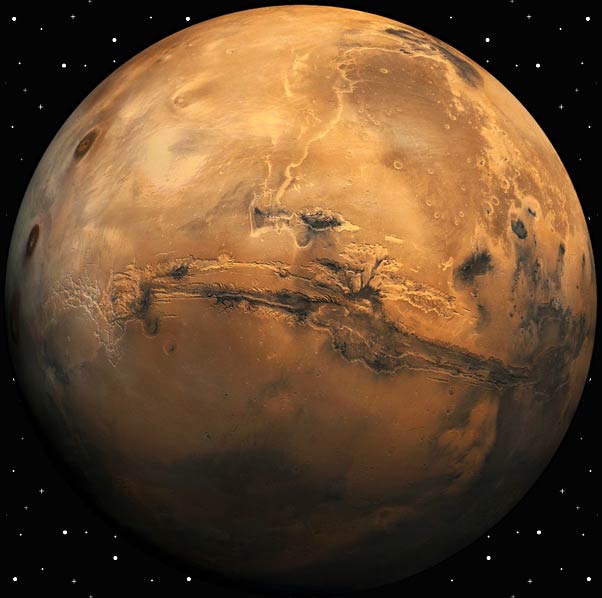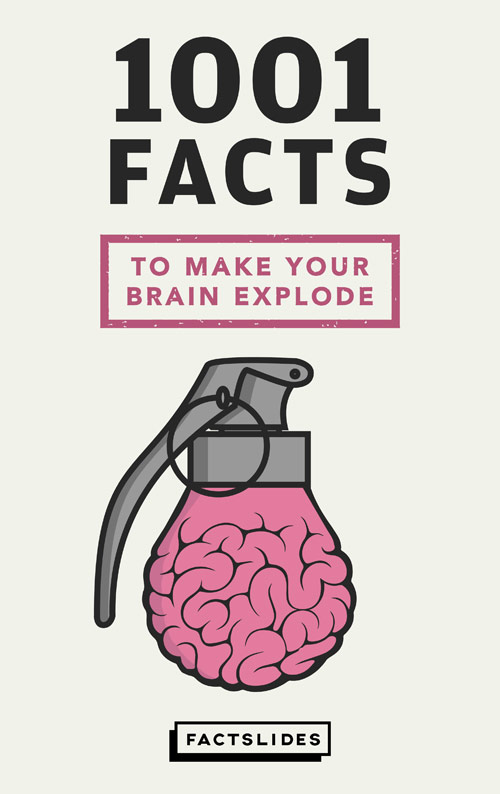
Over 100,000 people have applied for a one-way trip to colonize Mars in 2022.
♦ SOURCE
♺ SHARE
On Mars, sunsets are blue.
♦ SOURCE
♺ SHARE
Mars has the tallest known mountain on a planet of our Solar System, with a height of 22 km (14 mi).
♦ SOURCE
♺ SHARE
Mars is populated entirely by robots. Seven to be precise.
♦ SOURCE
♺ SHARE
Mars is red because it is covered in rust (iron oxide).
♦ SOURCE
♺ SHARE
The movie Gravity was more expensive than the Indian Mars mission.
♦ SOURCE
♺ SHARE
On its one-year anniversary, the NASA's Curiosity Rover sang the “Happy Birthday” tune to itself on Mars.
♦ SOURCE
♺ SHARE
The average temperature in Mars is -81°F (-63°C).
♦ SOURCE
♺ SHARE
Your weight in Mars is over 60% less than on Earth.
♦ SOURCE
♺ SHARE
Mars is about half the size of the Earth.
♦ SOURCE
♺ SHARE
In 1997, three men from Yemen tried to sue NASA for invading Mars, claiming they had inherited it from their ancestors 3,000 years ago.
♦ SOURCE
♺ SHARE
The soil on Mars is particularly good for growing asparagus.
♦ SOURCE
♺ SHARE
Google.com/Mars offers visible imagery view, infrared and elevation views of the planet Mars.
♦ SOURCE
♺ SHARE
Jupiter has 67 moons, Saturn has 62, Uranus 27, Neptune 14, Mars 2 and Earth just one.
♦ SOURCE
♺ SHARE
Scientists want to introduce global warming on Mars to make life habitable for colonization.
♦ SOURCE
♺ SHARE
Mars has a flag. It was designed by a NASA engineer.
♦ SOURCE
♺ SHARE
There are 5 planets you can see with the naked eye, not using a telescope: Mercury, Venus, Mars, Jupiter and Saturn.
♦ SOURCE
♺ SHARE
According to NASA, it would cost about US$18,000 to send a letter to Mars.
♦ SOURCE
♺ SHARE
Mars has the largest dust storms in the Solar System. They can last for months and can cover the entire planet.
♦ SOURCE
♺ SHARE
Mars is the second smallest planet in the Solar System, after Mercury.
♦ SOURCE
♺ SHARE
Mars' craters larger than 60 km are named for deceased scientists, writers and others who have contributed to the study of Mars.
♦ SOURCE
♺ SHARE
The first successful Mars flyby was in 1965 by the Mariner 4.
♦ SOURCE
♺ SHARE
In 1840, areographer Johann Heinrich Madler combined ten years of observations and drew the first map of Mars.
♦ SOURCE
♺ SHARE
Mars is located closer to the asteroid belt, so it has an increased chance of being struck by materials from that source.
♦ SOURCE
♺ SHARE
The German Aerospace Center discovered that Earth lichens can survive in simulated Mars conditions.
♦ SOURCE
♺ SHARE
The closest distance between Earth and Mars will continue to mildly decrease for the next 25,000 years.
♦ SOURCE
♺ SHARE
In 1610, Mars was viewed by Galileo Galilei, the first one to see it via telescope.
♦ SOURCE
♺ SHARE
4 billion years ago, Mars had an ocean covering 19% of the planet's surface.
♦ SOURCE
♺ SHARE
A Martian day is about 44 minutes longer than an Earth day.
♦ SOURCE
♺ SHARE
If you weighed 150 lb (68 kg) on Earth, you would weigh 57 lb (26 kg) on Mercury or Mars.
♦ SOURCE
♺ SHARE
Craters on Mars under 60 kilometres in diameter are named after towns on Earth with populations under 100,000.
♦ SOURCE
♺ SHARE
UK's Royal Mail estimated in 2015 that it would cost £11,602 to send a letter to Mars.
♦ SOURCE
♺ SHARE
Mars has no magnetic field.
♦ SOURCE
♺ SHARE
According to a 1967 U.N. treaty, nobody can own celestial bodies such as Mars or the Moon.
♦ SOURCE
♺ SHARE



















